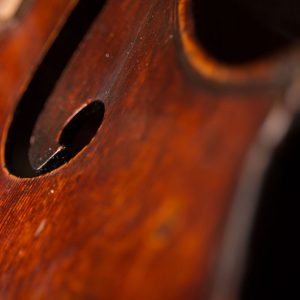
Travails of Travel with a Cello
Blogmaster
Airlines can be sticky about these instruments, no matter how rare and valuable
(Excerpted with permission from OttawaCitizen.com)
Don’t tell Pinchas Zukerman, but Amanda Forsyth has another man in her life.
His name is Carlo. He’s Italian, 300 years old, about four feet tall and made of wood.
On second thought, Zukerman has probably met this guy. He lives in a special carbon fibre case in the home he shares with Forsyth. Carlo is, after all, a cello and a very expensive one at that, having been made by Carlo Giuseppe Testore in 1699 and being worth hundreds of thousands of dollars.
That all makes Forsyth pretty protective of old Carlo, her nickname for her instrument.
“He’s my other husband,” she says. “Whenever I go to Italy, I always open his case and say welcome home.”
That gives an inkling as to why she has signed a petition urging the European Union to establish clear, uniform guidelines on handling of instruments and is urging Canadian airlines to do the same.
Cellos like Carlo can travel some unfriendly skies. Their owners pay for seats for the cellos, where they endure the stares of other passengers. But sometimes they can’t get a seat so they get bumped and banged. Or they get covered by security nets. They get stuffed in too small closets. They get hung upside down. Before boarding, tickets are questioned, cases are opened and the instruments are handled and scrutinized by security personnel. In Moscow, she has to pack proof of ownership to show the officials or risk the seizure of her instrument. Let’s face it, the cellos get downright disrespected.
“This is not something that you can just go and get a replacement. My instrument is made in 1699. There is one of a kind, never to be replicated,” she says.
And when your itinerary is Ottawa-New York-Moscow-St. Petersburg-Colorado-Munich-Ottawa, dealing with airlines can raise the tension dial. (She has praise for officials at Ottawa’s international airport who go out of their way to accommodate her and Carlo).
For Forsyth, the stress of air travel has been with her since the beginning of her travels with cellos. It used to wind her up so much that she would be physically ill before boarding a plane or she would pop a pill to calm her down. These days she works hard to stay calm.
In part, it’s the direct treatment of the instrument, but more so it is that cabin crew has final say over the seating of the instrument or where it must be stowed, Forsyth says, and those decisions can lead to confrontation.
The crisis of the flying cello came to the fore recently because of a very public example set this past summer by Paul Katz, a prominent American cellist, who wrote in the Boston Globe about his encounter with Calgary-based Westjet’s rules about instruments such as cellos. Katz had purchased a ticket, as is the norm, for his instrument. However Westjet does not allow the instruments to ride in a passenger’s seat. After much discussion the cello was checked.
Westjet’s rules are posted on the airline’s website: “Musical instruments: Although seats may not be purchased for instruments, we will accept small instruments as part of the carry-on baggage allowance. Exceptions may be made for irregular-sized instruments. All instruments must be stowed in the overhead compartment, under the seat or in other approved locations. This is left to the discretion of the cabin crew and Customer Service Agent upon checking flight and baggage loads. Instruments may also be accepted in checked baggage when they are properly packed.”
Katz’s beloved Guarneri (valued in the millions) was fine, but that isn’t always the case, Forsyth says. She has heard of dings and scratches inflicted upon priceless and unique instruments.
For their part, airlines have to think about all the passengers on a flight when they are determining how to handle an unusual seating request. But for the cellist, their livelihood depends on their instrument.
So Forsyth says she’s all about educating the industry about the cello and the need for some tender care.
Right now, though she is in-between flights at home in Ottawa preparing for two performances of Boccherini’s Cello Concerto No. 9, as arranged by Friedrich Grützmacher, with her colleagues in the National Arts Centre Orchestra on Wednesday and Thursday. The Boccherini is one of the standard pieces of the solo cello repertoire, she says, and she is performing it later in Moscow, which will be televised, and in Munich. No one ever plays Boccherini’s other 11 cello concertos, she says.
Forsyth has not been with the orchestra in other performances recently because she is on a year-long unpaid sabbatical from the NACO pursuing her solo career and performances with the Zukerman Chamber Players.
Travel matters for the career, she says: “The more you see, the more you smell, the more you taste, the more you experience, really goes into your playing.”
Patrons have noticed her absence, she says. Last week someone came up to her during one of the Beethoven performances and asked why she wasn’t on stage.
“The person said, ‘Oh, you’re taking the night off,’ and I told them I was on sabbatical. They replied: ‘I hope you’ll be here next week’” for the Boccherini show. Not much doubt about that.
National Arts Centre Orchestra
Featuring Amanda Forsyth, cello
Wednesday and Thursday
Tickets: nac-cna.ca
Subjects: Travel
